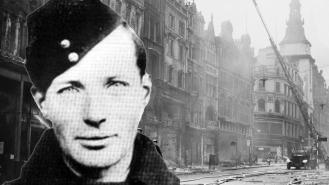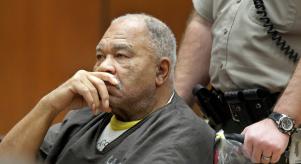
Capital punishment in the UK and the criminals executed for their crimes
Capital punishment might feel like a dark and Dickensian period of our history. However, while public executions in Britain were eliminated in the 1860s, it wasn’t until an entire century later, in 1964, that the death sentence was abolished. Here are a few examples of executions that took place in the UK in the 1900s.
George Joseph Smith
Born in Bethnal Green, London, crime wasn’t something that George fell into later in life. Sent to a reformatory at the age of nine, George was well known for swindling, theft, and a pattern of criminal behavior. He served 12 months in prison in the 1890s after convincing a woman to steal money from her employers. He used the money from her embezzlement to open a bakery in Leicester.
In 1898 George married his first (and only legal) wife, Beatrice, under an alias. It was just a year later when he would marry again and become a serial bigamist.
After serving a year in prison for stealing from her employers and giving the money to her husband, Beatrice implicated George, which resulted in him serving two years in jail. Beatrice fled to Canada upon his subsequent release, while George returned to his second wife to empty her savings account. He swiftly vanished soon after.
Leaving a trail of devastation in his wake, George kept up a trend of marrying his unsuspecting victims before selling off their possessions and emptying their savings accounts - never to be seen again. The wives he robbed, however, were the lucky ones. It wouldn’t be long until George graduated to his new scam: murder.
In January 1915, DI Arthur Neil received a letter from the concerned owners of a boarding house in London. The letter included two newspaper clippings; one regarding the death of Mrs. Lloyd, a tenant in their boarding house whose body was found by her husband and the landlady, and another detailing a similar death from a boarding house in Brighton. George didn’t know it, but the hunt was on for the perpetrator of the Brides in the Bath Murders. A little over a month later, George was arrested for the murders of three women. He was sentenced to death and was hanged in Maidstone prison on August 13th, 1915.
Gordon Cummins
Born the eldest of four children in North Yorkshire, Gordon’s childhood was relatively uneventful. Having been sent to a private school in South Wales, Gordon graduated at 16 with a diploma in chemistry. He moved to Northampton for college but dropped out shortly after.
Gordon struggled to hold down employment and started living an aristocratic lifestyle while residing in London. He would frequent hotels and clubs across the West End of London claiming to be the illegitimate son of a peer and insisted that he be referred to as the Honourable Gordon Cummins. He financed his luxurious lifestyle through acts of embezzlement and theft and regularly bragged to friends and colleagues about his sexual conquests. His lifestyle soon caught up with him when his employers felt that his lavish lifestyle affected his work and fired him. At a loss for further employment, Gordon joined the RAF in 1935.
On the evening of February 14th, 1942, Gordon was enjoying the company of Margaret Haywood - a woman that he had met in Picadilly when he started groping her. As she tried to defend herself, Margaret was choked unconscious by Gordon. As he rifled through her handbag, Gordon was startled by a local delivery boy, dropping his gas mask and haversack as he fled. Realising his mistake, Gordon stole the gas mask and haversack of another soldier in an attempt to provide himself with an alibi. However, the regimental number inside the haversack left at the scene showed that it had been issued to Cummins.
In the six days before the attack, there had been a string of murders committed against women. Capitalising on the blackout restrictions over London, Cummins had gone on a killing spree. Dubbed the Blackout Ripper, Cummins was found guilty of murder. He was hanged at Wandsworth Prison on June 25th, 1942.
Theodore Schurch
Born in Hammersmith, London, Theodore was the last person in Britain to be hanged for an offence other than murder.
A member of the British Union of Fascists, Theodore joined the army in 1936 as a British Army Service Corps Driver. While stationed in Africa, Theodore was captured by the Axis forces.
Theodore quickly turned double agent and began working with the Axis Forces to gain intelligence about the Allies. Posing as a prisoner of war to gain the trust of captive Allied prisoners and then reported any information that he learned back to Italian and German intelligence.
Theodore was captured in Rome in 1945 and was returned to England, where he was charged with nine counts of treachery and one count of desertion with intent to join the enemy. He was hanged at Pentonville Prison on the 4th of January, 1946.







